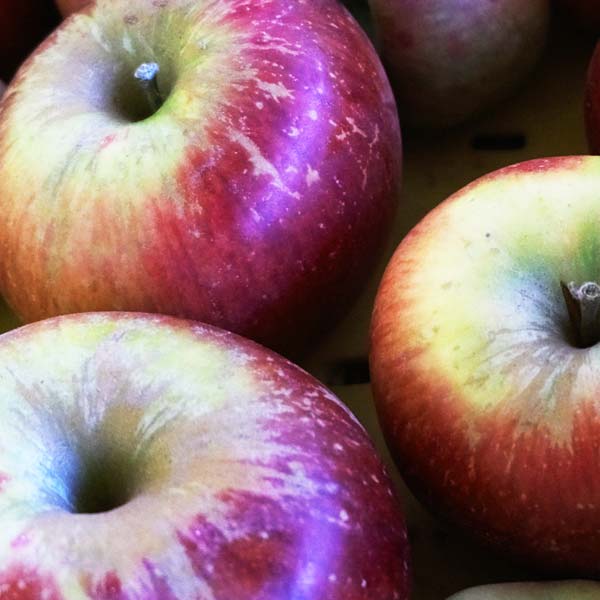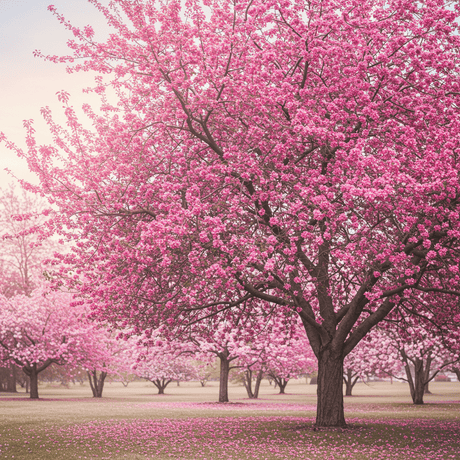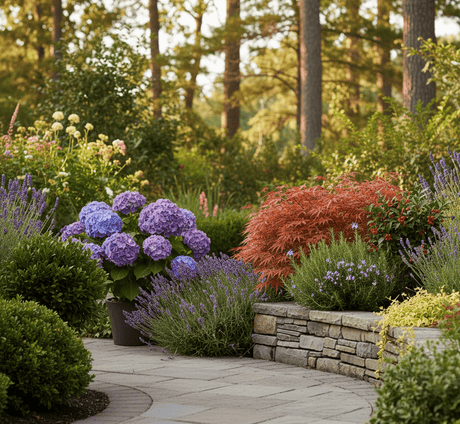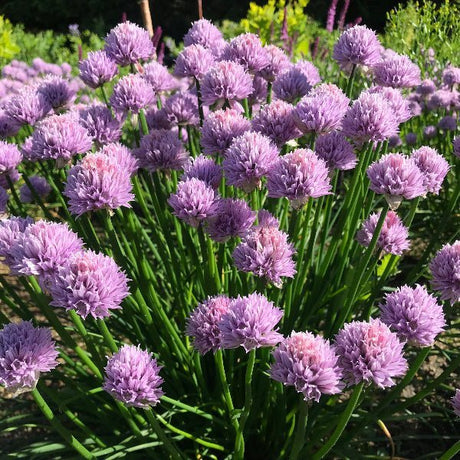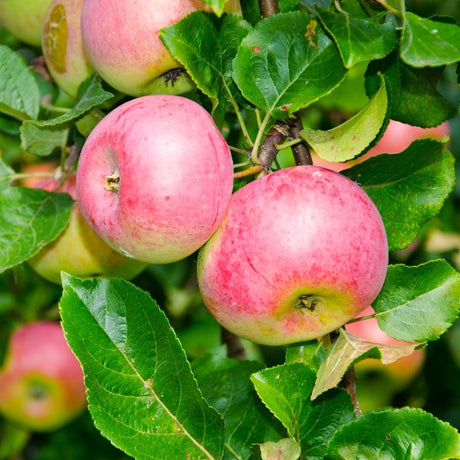Melrose Apple Tree
Malus 'Melrose'
Plant Sentry™
Plant Sentry™

Plant Sentry™ Protected
Your order is protected by our compliance system that:
- Prevents restricted plants from shipping to your state
- Ensures plants meet your state's agricultural requirements
- Protects gardens from invasive pests and diseases
Delivery and Shipping
Delivery and Shipping
Delivery and Shipping
Fast, Safe Plant Delivery
Ships in 3-4 business days • Tracking provided • Weather protected
| Under $50 | $9.99 |
| $50 - $99.99 | $14.99 |
| $100 - $149.99 | $16.99 |
| $150 - $198.99 | $24.99 |
| $199+ | FREE |
✓ Zone-specific timing • ✓ Professional packaging • ✓ Health guarantee
Understanding Plant Options
Nature Hills offers plants in two main formats:
- Container Plants: Grown in pots with soil, sized by container volume and plant age
- Bare Root Plants: Dormant plants without soil, sized by height measurements
Container Plant Sizes
Container sizes indicate plant age and growing capacity rather than liquid volume equivalents. Our containers follow industry-standard nursery "trade gallon" specifications, which differ from standard liquid gallon measurements.
Young Plants (6 months to 18 months old)
| Container Size | Actual Volume | Metric Equivalent |
|---|---|---|
| 2" x 2" x 3" | 0.18 - 0.21 dry quarts | 0.20 - 0.23 dry liters |
| 4" Container | 0.31 - 0.87 dry quarts | 0.35 - 0.96 dry liters |
| 4.5" Container | 0.65 dry quarts | 0.72 dry liters |
| 6" Container | 1.4 dry quarts | 1.59 dry liters |
| 1 Quart | 1 dry quart | 1.1 dry liters |
| 5.5" Container | 1.89 dry quarts | 2.08 dry liters |
Established Plants (18 months to 2.5 years old)
| Container Size | Actual Volume | Metric Equivalent |
|---|---|---|
| 2 Quart | 2 dry quarts | 2.2 dry liters |
| #1 Container | 2.26 - 3.73 dry quarts | 2.49 - 4.11 dry liters |
| 5" x 5" x 12" | 3.5 - 4.3 dry quarts | 3.85 - 4.74 dry liters |
Mature Plants (2-4 years old)
| Container Size | Actual Volume | Metric Equivalent |
|---|---|---|
| #2 Container | 1.19 - 1.76 dry gallons | 5.24 - 7.75 dry liters |
| #3 Container | 2.15 - 2.76 dry gallons | 8.14 - 12.16 dry liters |
Large Plants (3-5 years old)
| Container Size | Actual Volume | Metric Equivalent |
|---|---|---|
| #5 Container | 2.92 - 4.62 dry gallons | 12.86 - 20.35 dry liters |
| #6 Container | 5.25 - 6.01 dry gallons | 23.12 - 26.42 dry liters |
| #7 Container | 5.98 - 6.53 dry gallons | 26.34 - 28.76 dry liters |
Bare Root Plants
Bare root plants are sold by height from the root system to the top of the plant. Plants may exceed minimum height requirements.
Common Sizes:
- Trees: 1 foot, 2 feet, 3 feet, 4 feet, 5 feet, 6 feet
- Shrubs & Perennials: 1 foot, 18 inches, 2 feet
Important Notes
Container Volume Specifications
- Trade Gallon Standard: Our containers follow industry-standard "trade gallon" specifications established by the American National Standards Institute (ANSI Z60.1) for nursery stock
- Volume Variations: Actual soil volume may vary due to plant root systems and growing medium settlement
- Age Indicators: Container size primarily indicates plant age and maturity rather than liquid volume equivalents
Growing Conditions
- Plant size can vary based on variety and growing conditions
- Container size helps indicate plant maturity and establishment level
- Larger containers generally mean more established root systems and faster landscape establishment
Seasonal Availability
- Bare root plants are available seasonally when dormant
- Container plants are available throughout the growing season
- Specific varieties may have limited availability in certain sizes
Questions?
For questions about specific plant sizes or availability, please contact our plant experts who can help you choose the right size for your landscape needs.

Plant Sentry™ Protected
Your order is protected by our compliance system that:
- Prevents restricted plants from shipping to your state
- Ensures plants meet your state's agricultural requirements
- Protects gardens from invasive pests and diseases
Plant Profile & Growing Essentials
Cold hardy, Flowering, Edible, Ornamental Berries/Fruit, Attracts pollinators, and Thornless
Specifications
Specifications
-
Botanical Name
-
Height
-
Width
-
Growing Zones
-
Sunlight
-
Growth RateModerate
-
Flower Color
-
Leaf Color
-
Fall Color
-
NativeYes
-
Pollinator FriendlyYes
-
Pollinator Required
-
Bloom PeriodLate Spring
-
FragrantYes
Planting & Care Instructions
Planting & Care Instructions
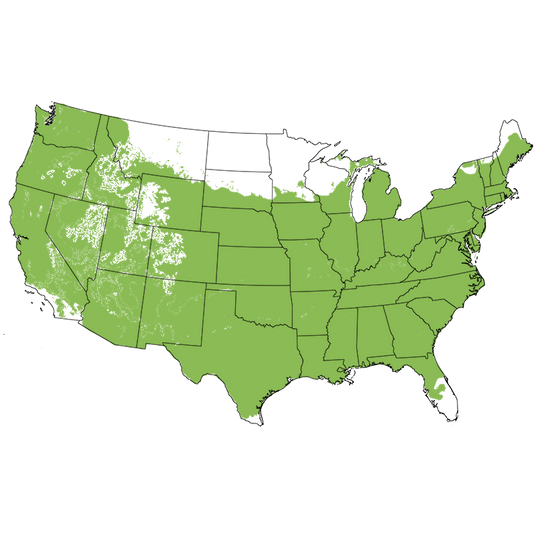
Growing Zones 5-9
Delicious Keeper Melrose Apple Tree
- Mid-Season
- 1000 Chill Hours
- Excellent Flavor
- Yellowish Green Skinned With Russet Spots and Dark Red Blush
- High Quality Creamy White Flesh
- Use For Sauces, Cooking and Dessert
- Great Keeper With Long Hang Time on the Tree
- Lovely White Flowers in Spring
- Productive and Vigorous
- Needs Cross Pollination for Larger Fruit Set
- Good Pollinizer Variety
Yes, it's the official Ohio State Apple! The Melrose Apple tree (Malus 'Melrose') is beloved for its flavor. With russeted yellow and green skin, and fiery red streaks, these Apples are a huge hit at farmer's markets.
Why not grow your own for a plentiful supply of this cherished variety?
These long-keeping Apples taste amazing, long into wintertime! The pretty creamy flesh is firm and juicy and features a wonderfully fruity aroma.
The flavor is well-balanced, with a slightly acidic zip to bring out the full complexity of the fruit sugars. Use them for sauces, baking, on fruit and cheese trays and as an eating Apple from January through April.
Melrose is a great value, as the productive tree provides for you and your family. This tree is an annual bearer.
Let the fruit hang on the tree, or pick and store in a cool, dry place. They’ll store in your refrigerator for months!
As with other russet-skinned apples, the flowery aroma and flavor feature a nutty, sugary richness. Delicious!
You'll feel good about including this very special variety in your Edible Landscape. After all, it's a great feeling to know that you have stores put by.
Backyard growers, feel confident about your choice of Melrose Apple for taste, aroma and value. These special apples are planted extensively on the West Coast. Order yours from the expert growers at Nature Hills today!
How to Use Melrose Apple in the Landscape
Melrose has a spreading growth habit and can become a cherished specimen tree (with edible benefits!) Apple trees are beautiful and very showy in both flower and fruit.
Use several of them in an informal grouping. Plant 12-15 feet on center for a grouping. Measure from the trunk of one tree to the trunk of the next.
Or, use high-density plantings to maximize space in your landscape. You'll also love the look. Plant 5 feet apart on center to create a solid screen.
Allow about 20 feet of clearance from the fence or house to ensure good air circulation. You'll want to have plenty of room to harvest them, too.
Keep fruiting trees as small as you like with annual pruning in the summer growing season. This is a well-established practice for backyard orchards. Watch our YouTube videos on Pruning for Size Control.
The large fruits are yellowish-green and streaked with red and russet spots and the flesh is sweet and juicy. Melrose is an excellent apple for pies, sauces and baking, and for snacking after storage.
#ProPlantTips for Care
Apples love a full sun location with good soil drainage. Look for locations that receive morning sun. This is the drying sun and helps keep your trees healthy.
Plant fruiting trees where they'll receive good air circulation. Avoid low-lying areas that trap frosty spring air.
Give your trees a moderate amount of water on a regular basis. Apply a layer of mulch 3 to 4 inches deep. Spread it out 3 feet outside of the canopy. This will keep the root system cool and extend the period between watering. Mulch will help you save on water.
Summer prune to control the overall height of the tree below 10 feet tall, for ease of maintenance and harvest. In winter, prune to keep the canopy open to improve airflow and increase sunlight.
These Apples were an Ohio Agricultural Experiment Station introduction that is a cross between a Red Delicious and a Jonathan. The fruit is flattened and a good keeper and they actually taste their fruity best if stored after harvest.
Enjoy the beloved Melrose Apple, homegrown from your own tree! Add one as a pollinator for other varieties, too.
Melrose Apple Tree Frequently Asked Questions
When to Plant Melrose Apple Trees
Planting Bareroot trees as soon as you can dig a hole in spring and until hot weather, the earlier the better. Plant container Apple trees throughout the growing season with complete success - that is the benefit of container plants - to extend the planting season. Your County Agricultural Extension Office is a great resource for first and last frost dates in your area.
How to Plant Melrose Apple Trees
Dig a large hole only as deep as needed to accommodate the bareroot or container root ball, and twice as wide. Add Nature Hills Root Booster to speed root establishment. Remove the pot or bag and situate it into the hole so the top of the soil (soil line if bareroot), is level with the new location's soil being careful not to plant too deep. Water in again very well and backfill with the same soil you dug up, tamping down gently to ensure there are no air pockets.
Top off with a 3-4 inch thick layer of Arborist mulch. Consider staking your tree to keep its trunk growing straight for the first year to ensure it stands tall against strong winds and drifting snow.
When to Prune Melrose Apple Trees
Trim off any broken branches from delivery as soon as you take them out of the box. Prune and trim apple trees while dormant, in late winter or early spring, before you see new growth.
How to Prune Melrose Apple Trees
Dormant prune to:
- Remove any double leaders or narrow crotch angles
- Eliminate any crossing branches
- Thin interior branching and leave the fruiting spurs and strong branches in place opening up the canopy
- Branching at least 24-36 inches above the ground
Prune Apple trees in the summer to:
- Control size and shape by reducing the length of longer new growth on vigorous trees
- Remove water sprouts on the main trunk or older branches in the crown
- Remove suckers at the base of the trunk
- Thin fruit during heavy years on established trees
How to Care for Melrose Apple Trees
Growing an apple tree is easy when proper soil, good drainage, attention to moisture, and regular fertility are maintained. Once you've chosen an apple tree that works for your climate, in the size you need for your landscape, and its pollinator (if needed), then you've accomplished half the battle!
- Apple trees do best in full sun and well-drained soil
- Water your apple trees when it gets dry - especially during the fruit production stage, and drought periods to keep it stress-free
- Use arborists' wood chips to mulch over the roots of your apples and have your soil tested to see what your soil may be lacking before adding fertilizers
- Maintenance pruning and shaping
Apple trees will tolerate a wide range of soils, so long as water and nutrients are not limited and the pH level is adequate.
How to Fertilize Melrose Apple Trees
For the first year, water alone is most important. It is always best to get a soil test to see what your soil is lacking before adding more fertilizers. Once established, a fertilizer routine may be beneficial. We do offer some excellent slow-release organic options, applied according to the package directions.
Fruit trees need more phosphate and it's possible to apply too much nitrogen which affects the soil's pH. Test soil acidity or alkalinity using a pH Tester.
Fertilize in spring when you first see new growth emerging.
- Don't overdo it
- Phosphates are your friends
- Pay attention to pH in areas with extremely high or low soil pH
- Follow the directions
Melrose Apple Tree Pollinating Info
Melrose is not self-fruiting and does need a pollinating partner, get more fruit when paired with these varieties:
- White Flowering Crabapples like Centennial, Chestnut, or Dolgo Crabapples
- Cortland
- Cox's Orange Pippin
- Cripps Pink and Red
- Empire
- Freedom
- Fuji
- Frostbite
- Gala
- Golden Delicious
- Granny Smith
- Honeycrisp
- Mcintosh
- Pixie Crunch
- Red Delicious
- SnowSweet
- Wealthy
- WineCrisp
- Wolf River
Harvest Times for Melrose Apple Trees
Melrose’s are typically ready to harvest in October.
Early-Season? Mid-Season? Late-Season? The terminology can be confusing for new apple tree growers. Weather, climate and your tree determine when it's ripe.
For Apples:
- Early-season is usually June-July
- Mid-season can be August-September
- Late-season can be from late September-November
The growing season consists of spring, summer, and fall, and varies with climate and weather. Areas with longer growing seasons in the warmer hardiness zones can greatly affect the harvest times for each particular apple variety grown in your area.

